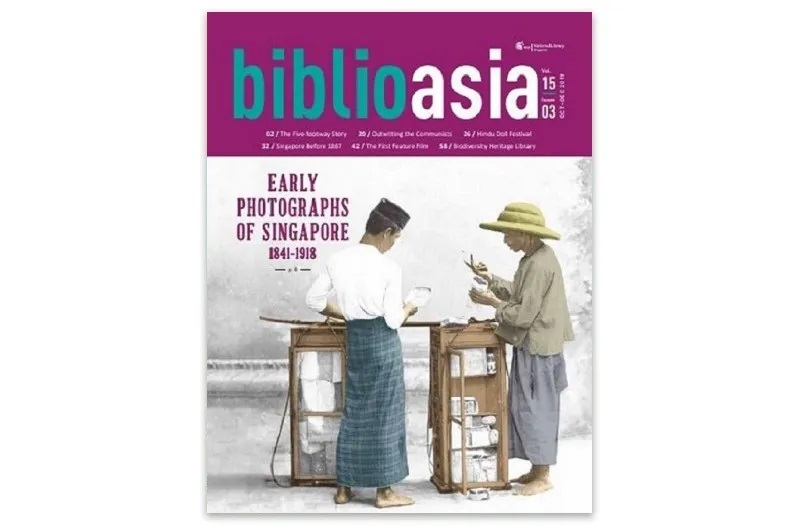Director's Note (Oct-Dec 2019)

Welcome to the final issue of BiblioAsia for the year.
Do make time to visit the National Library’s latest exhibition, “On Paper: Singapore Before 1867”, which takes place at level 10 of the National Library building until March 2020. We preview several paper-based artefacts – four paintings, two poems in Jawi script, a map and a Russian travelogue – that feature in the exhibition capturing Singapore’s history from the 17th century to when it became a British Crown Colony on 1 April 1867. Many of the artefacts in the exhibition, some of which are on loan from overseas institutions, are on public display for the first time.
The first practical method of creating permanent images with a camera was unveiled to the world by Frenchman Louis Daguerre in 1839, so it is no surprise that Europeans dominated the photography business in 19th-century Singapore. Some of the earliest images of landscapes and people here were taken by the likes of Gaston Dutronquoy, John Thomson, the Sachtler brothers and G.R. Lambert. Janice Loo charts the rise and fall of Singapore’s first photographic studios.
The “five-footway” is another inherited tradition from Singapore’s colonial days. The sheltered walkway between shophouse and street, however, was a source of irritation for many Europeans, who objected to Asians taking over the five-footways to peddle food and all manner of goods. The squabble for space led to a three-day riot in the town centre in 1888, according to Fiona Lim.
As part of the annual Hindu festival of Navaratri, a colourful doll display called Golu takes pride of place in many homes and temples in Singapore over nine nights. Anasuya Soundararajan tells us how this time-honoured tradition, which has its roots in 14th-century India, is celebrated here.
During the Malayan Emergency, Chinese people living in Malaya’s jungle fringes were resettled into heavily fortified “New Villages” so that communist insurgents would not be able to infiltrate the civilian population to enlist their help. But the communists still managed to outwit the British authorities, as Ronnie Tan reveals.
Most of the stories told about the Japanese Occupation recount the experiences of the Chinese community in Singapore. In the closing months of 1941, a 12-year-old Indian boy by the name of K. Ramakanthan fled from Perak to Johor with his family to escape the advancing Japanese troops. Aishwariyaa Ramakanthan shares her father’s riveting account of his scramble to safety.
The authors of a recently published book have put together enough evidence to confirm that Xin Ke, or The Immigrant, produced in 1927, is the first full-length feature film to be made in Singapore and Malaya. Jocelyn Lau tracks the making of this milestone movie.
Last but not least, Chua Jun Yan delves into the history of Dieppe Barracks, the former home of British and New Zealand soldiers; Lim Tin Seng shares highlights of Singapore publications in the digital collection of the Biodiversity Heritage Library; and Goh Yu Mei examines the Tan Swie Hian Collection to reveal what drives the creative meanderings of Singapore’s foremost multidisciplinary artist.
Mrs Wai Yin Pryke
Director
National Library

